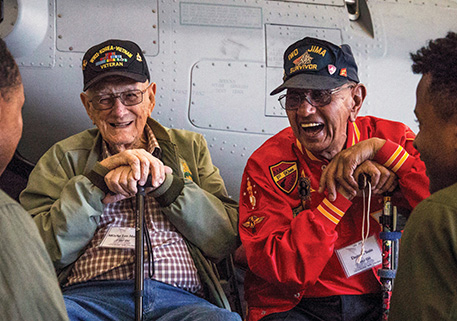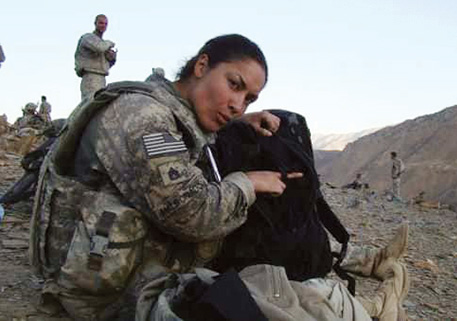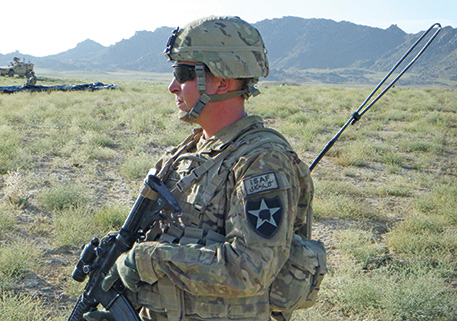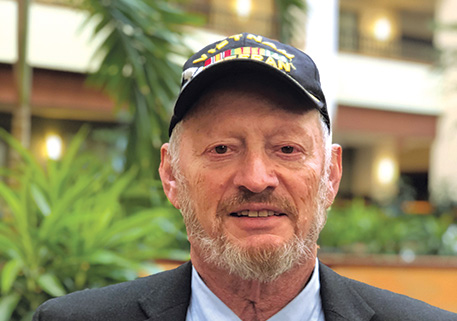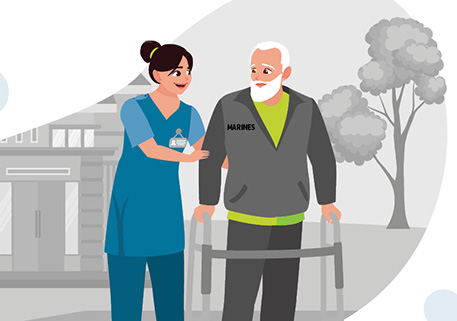Shortly after World War II came to an end in 1945, many kindhearted and well-intentioned Americans wanted to get involved through their very own volunteer efforts and assist the nation’s veterans returning home.
In order to make the most of their patriotism, retired Army Gen. Omar Bradley, then head of the Veterans Administration, established a Voluntary Service National Advisory Committee to assist in organizing these spontaneous volunteer efforts.
DAV and DAV Auxiliary, among other organizations, were a part of the advisory committee. On April 17, 1946, they recommended and approved the VA plan, which came to be known as the Veterans Affairs Voluntary Service, or VAVS.
Working together under the VAVS plan, the field station staff and the members of the voluntary service organizations provided a volunteer program that has become increasingly more meaningful to veteran patients, the VA and DAV.
“This really was a turning point in how we went about serving our veterans,” said DAV National Adjutant Marc Burgess. “It changed the game by bringing more people to the table and the discussion. We are extremely proud of our partnership and look forward to continuing for many, many years to come.”
“The long-standing partnership between DAV and VAVS is one based on loyalty and commitment,” said Tracy Butts, chief of voluntary services at the Cincinnati VA Medical Center. “I use the word loyalty as the foundation of our partnership because DAV has continued through the years to remain a faithful partner to the VA. DAV’s commitment is demonstrated, time and time again, through their promise to serve those who have served and those who continue to serve.”
The program has evolved over its 70 years of existence. One of the most significant examples of this was in 1987 when the VA stopped its own transportation network for veterans to and from VA medical centers. This created another obstacle for many veterans who were not able to drive themselves to their appointments. Since then, DAV and the VAVS have staffed and funded a nationwide volunteer-based transportation network.
Since 1987, DAV Departments and Chapters have donated 2,967 vehicles to the Transportation Network, and these vehicles have traveled over 642 million miles to get veterans to and from their appointments.
“Dr. [David] Shulkin, [VA] Under Secretary for Health, has identified access to care as a key priority for the organization,” said Sabrina C. Clark, Director of VA Voluntary Service. “It cannot be overstated how DAV’s crucial involvement with the [Transportation Network] impacts the ability of our veteran patients to get to VA facilities all across the country.
“For the number of veterans who utilize this service, VA recognizes that our partnership with DAV is one that absolutely fills a need that may otherwise go unmet,” she added.
“The partnership between DAV and VA has given the public and veterans countless opportunities to recognize the service and sacrifices of those whose lives were changed in military service,” said DAV National Director of Voluntary Services John Kleindienst. “It is one of the things that makes care at the VA unique—that there are people there who recognize the contributions of veterans. While improving the morale of those receiving care, it’s also saved taxpayers significantly over the course of seven decades.”
At most VA facilities, a DAV Hospital Service Coordinator has been established to assume the responsibility for coordinating the Transportation Network. Currently, DAV has 190 service coordinators at 197 VA medical centers nationwide.
Monetary estimates aside, the impact of such a long-running volunteer-based network may be hard to quantify. Considering the more than 1.6 million volunteered hours and over 24 million miles driven in 2015, it’s hard to imagine the program not being there.
“I’ve seen smiles, I’ve heard many thanks, and I’ve witnessed tears rolling down the faces of those in need,” said Butts. “I’ve seen these heartfelt moments on large and small scales, [from] the donation of vans that provide transportation to thousands of veterans who otherwise would have no way of getting the medical attention they deserve, to smaller acts—yet just as impactful—[such as] giving a winter coat to a homeless veteran. In times of need, DAV is always there.”


